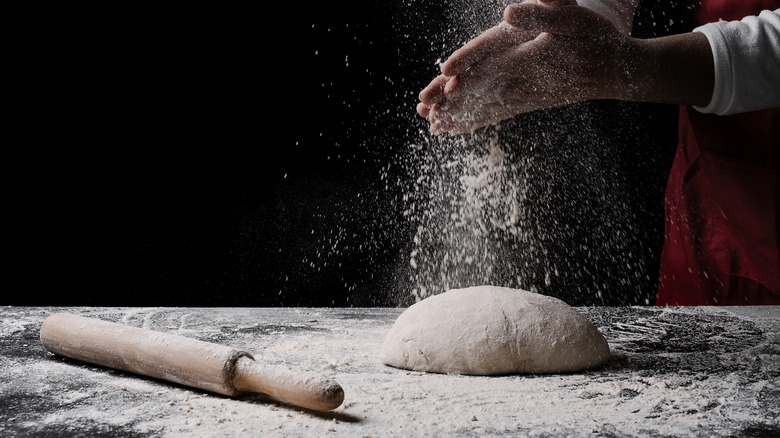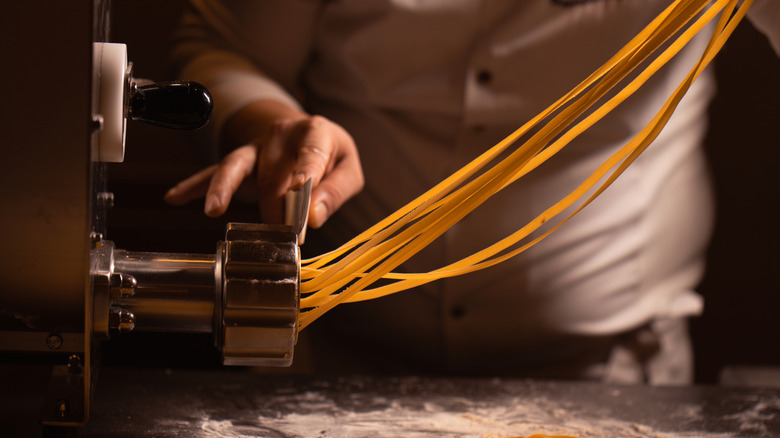Kneading Pasta Dough Is Easier Than You Think, Here's How
We may receive a commission on purchases made from links.
Making pasta at home feels to most of us like an intimidating task. Making fresh dough? That sounds complicated and easy to get wrong, especially the kneading part. Before you reach for your go-to pack of dried penne, you should know that kneading perfect pasta dough isn't a mysterious skill reserved for Italian grandmothers or professionally trained chefs — it's actually quite straightforward once you understand what you're doing and why.
Once you know that the primary goal of kneading the dough is to develop gluten, you're on your way to easily make pasta dough. You need to start with a clean, lightly floured work surface, then mix the flour and eggs together using the classic volcano method before using the heel of your palms to press the dough down and forward, folding it back on itself each time. This motion is what stretches the gluten strands out. It's important not to rush through the kneading process, it should take about eight to ten minutes of constant pushing and folding before the dough goes from being sticky to smooth and elastic.
When it's finally done, it should feel firm but pliable; you can push your finger in to test it. If your dough still feels sticky, don't add in extra flour, instead, dust your hands and surface with a small amount and continue to knead. Remember that dough absorbs a bit more moisture when you leave it to rest, so don't worry too much if it's slightly sticky.
After kneading, make sure your dough rests properly
Now that you have kneading down, it's time to focus on one step you can't skip when making homemade pasta: letting the dough rest. After all that action, it's time to let it relax, so wrap it tightly in plastic, and let it sit at room temperature for an hour. As it rests, the gluten will relax and the dough will become easier to roll. If you're making the dough ahead of time and need to refrigerate it, let it rest first, pop it in the fridge, then bring it back to room temperature before you try and roll it out.
Test your dough by holding it up to the light: A properly kneaded and rested dough will show tiny air bubbles throughout — a sign you've incorporated the right amount of air during the kneading process. A properly kneaded and rested dough should also roll out easily; you'll feel this in how it lets the rolling pin or pasta machine move it without any resistance.
Using a pasta machine to extrude and cut your dough isn't as daunting as it sounds, either. You can get a decent one for a good price, like the iSiLER's Pasta Maker, or opt for an automatic machine. The pasta you churn out with a machine will also cook more evenly, so it's a worthwhile investment if you're looking for restaurant-worthy pasta at home. With excellent kneading techniques, you'll have delicious, homemade pasta in no time at all.

